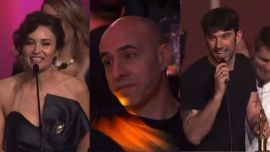The sudden announcement of Justice Carlos Rosenkrantz’s election as head of the Supreme Court in September surprised many. So too did early signs of a smooth transition of power from Justice Ricardo Lorenzetti’s 11-year presidency of the Court.
However, the peace did not last long. A dispute over procedure and behaviour boiled over into the public sphere this week, exposing underlying rifts in the Judiciary and the nature of power plays within the country's highest court.
Lorenzetti on Tuesday accused Rosenkrantz of “expressions that move [the Court] away” from gender policy and the “protection of women”. He accused his successor of “telephone threats” and “creating a climate of tension, fear” among Court staff, specifically against Maria Bourdin, the head of the Court’s online news portal the Centro de Informacion Judicial (CIJ).
Bourdin is considered Lorenzetti’s right-hand woman and his direct connection with the media and journalists. Lorenzetti moved her and another nine Communication area staff into other roles.
In a resolution, Justice Rosenkrantz ordered the “return of all technological media” to the presidency of the Court. He claimed Lorenzetti had attempted to empty out the Communications of wing of the presidency in the days prior to his leaving the post.
Lorenzetti was quick to reply, lamenting the perceived "mediocrity" of Rosenkrantz's resolution and decrying that “never in the last few years” has a resolution of this nature been accompanied by “scandal”.
“I lament such mediocrity but, with the prestige of the institution at risk, I find myself obliged to answer”, he added, detailing an alleged act of bullying against Bourdin and supposed attempts at “privatising the Centro de Informacion Judicial”.
ROSENKRANTZ
Rosenkrantz was confirmed as a Supreme Court Justice in August, 2016. His nomination sparked controversy at the time, as it was originally passed by presidential decree. President Mauricio Macri was eventually forced to retreat on his decision, publicly recognising it as mistake and sending the nomination through the normal channels of Congress.
In his short time on Argentina's highest tribunal, Rosenkrantz's decisions have been the subject of debate and division. In 2017, he voted in favour of extending the so-called "two for one" ruling to human rights cases, through which those who had been found guilty of crimes against humanity could apply for reduced sentences, like defendants in other types of criminal cases.
In a political sense, Rosenkrantz is tied to the UCR Radical Party. In 1984, at the age of 25, he was an adviser on the Consolidation of Democracy Counsel, a body set up by then-president Raúl Alfonsín to guide the country's return to democracy.
-TIMES




















Comments